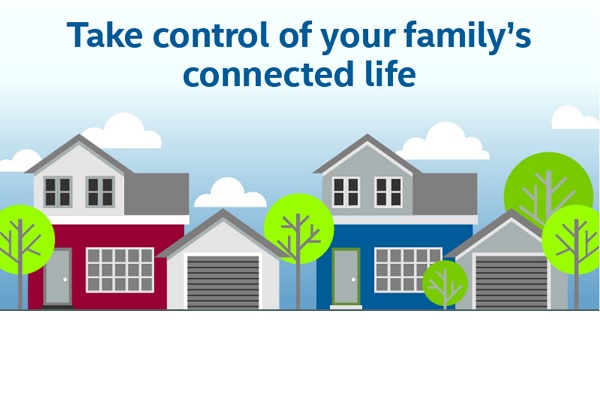Today Intel Security released findings from a recent global study, “New Family Dynamics in a Connected World,” that aims to better comprehend how families’ attitudes and habits are evolving as their homes and lifestyles become increasingly connected. This study underscores the need for simple ways for parents to manage internet connectivity in their homes – from blocking inappropriate sites to controlling the amount of time users spend on their devices to disconnecting to the internet entirely from time to time.
Today, we are seeing the rise in popularity of the smart home and its connected devices. In fact, Gartner forecasts that “there will be more than 10.5 billion ‘things’ in homes by 2020,”1 which we believe creates a larger potential risk that the devices and personal data that flow from them can be compromised. While internet-connected devices offer consumers new opportunities, they can also come with some drawbacks and potential risks that can be the detriment of relationships.
“While there is tremendous excitement for the conveniences that today’s technology brings, we know the weakest link in those devices within a connected home put consumers at risk,” said Gary Davis, chief consumer security evangelist at Intel Security. “We must empower parents to actively manage how their families interact with those devices. When the correct security and privacy measures are taken, consumers will feel more protected enabling them to fully enjoy all the benefits of living in a smart home.”
Current Monitoring Methods Don’t Keep Pace with Technology
- Despite their concern of online risks and living a digitally led lifestyle, parents tend to use older methods to monitor their children’s device usage. Thirty-five percent of parents admitted to monitoring their child’s device usage by keeping the device in their possession and giving it to them only when they were around, while only 23 percent admit to using software to monitor activity.
- Eighty percent of parents are concerned about their child potentially interacting with a social predator or cybercriminal online.
Today’s Digital Habits Cause New Parenting Concerns
- Bedtime habits have changed a lot since the introduction of smartphones and tablets. Seventy-six percent of parents allow their child to bring an internet-connected device to bed.
- Not only are parents concerned about who their children are interacting with online, they are also monitoring how much time they spend in front of a screen. Forty-eight percent of parents allow their child to have 1-2 hours of screen time per day, and 20 percent allow their child less than one hour a day.
- Unfortunately, parents can’t be there all the time to monitor the device usage. In fact, 34 percent of parents claim they have discovered that their child visited an inappropriate website on their device.
- Thirty-two percent of survey participants stated that they have argued with their child about bringing a device to bed.
- Conversely, kids aren’t the only ones who are using devices when they shouldn’t: Approximately 36 percent of parents surveyed also claimed that their child has called them out for being on their device during family time.
The Good News: Online Safety Conversations Are Happening Between Parents and Children
- Parents understand the importance of talking to their children about the potential dangers on the internet, with roughly 85 percent having addressed the risks with their children at some point.
Tips to Keep Families Secure in Year Ahead
To stay protected in the evolving online world, Intel Security has the following tips for parents:
- Start conversations early. If you start talking about online safety early, it will make your job that much easier when your children get older. If your kids are young, start with simple rules like “don’t open emails from people you don’t know.” You want online safety to be part of normal behavior.
- Set a good example.It’s easy to get caught up spending a lot of time on our devices, and kids pick up our habits – both good and bad. Set a positive example by limiting your time on social networks when at home and putting your phone away during dinner and family time.
- Keep strangers out. Most children have been using devices from an early age, desensitizing them to the potentials risks of online behavior. A false sense of security can set in for children and they could be unknowingly interacting with a social predator or dangerous person posing as a teen (catfish). This isn’t just on social media networks; it applies to common services such as Uber*, Lyft* and Craigslist*. Remind kids that anyone can create a profile and to decline friend requests from strangers.
- Take control of your home network. The home network is the hub for all of your connected devices. New solutions, such as McAfee Secure Home Platform, help you easily manage and protect devices connected to this network while providing parental controls with permissions that can be tailored to the entire household.
Top Infographic: Our Digital Lifestyle Affects Connected Familie – link























